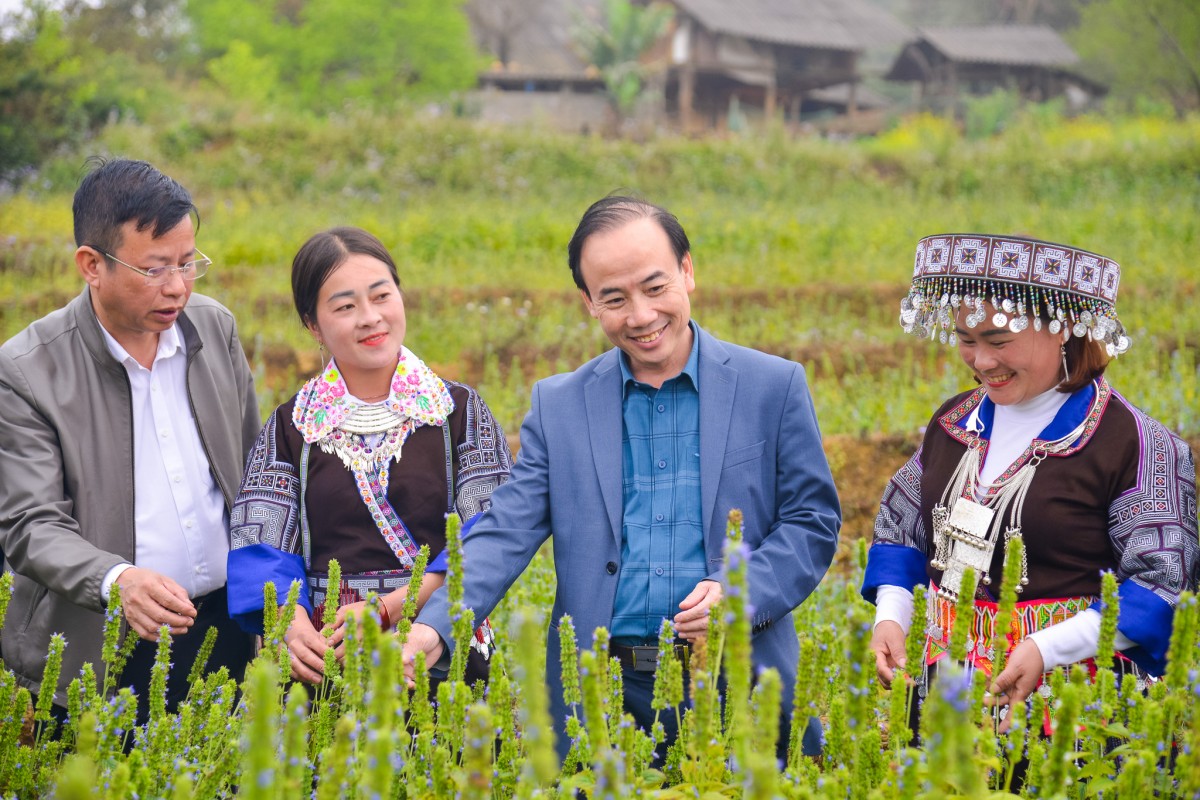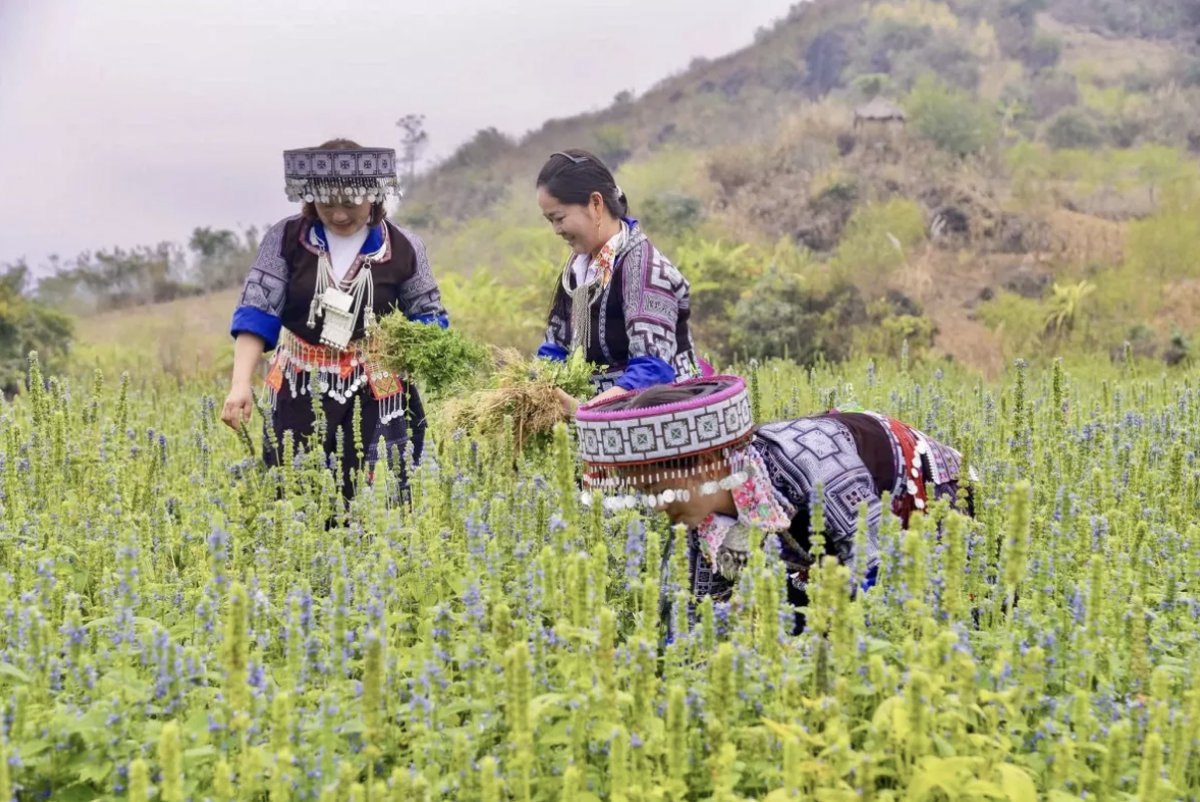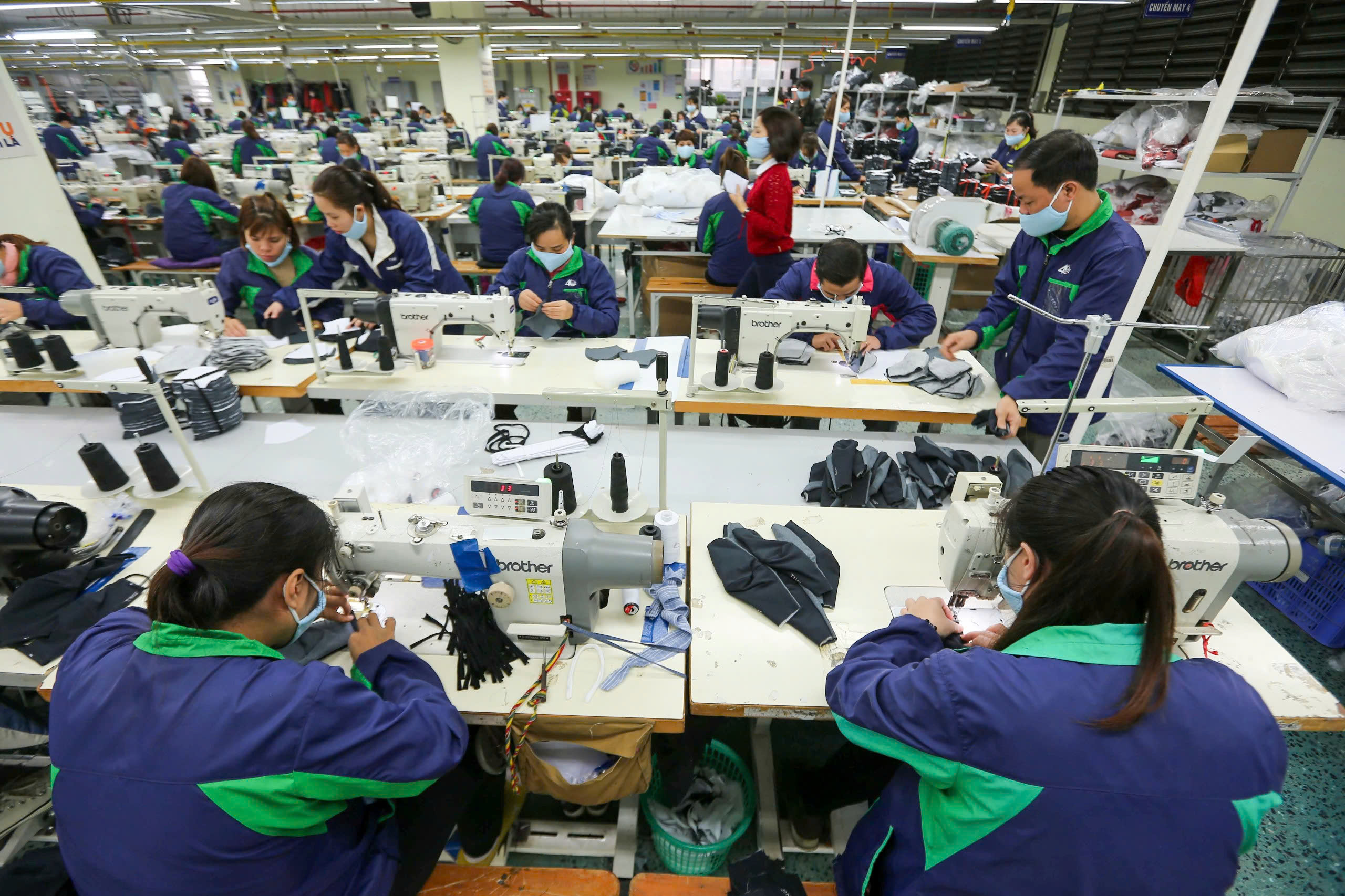
Vietnam to review over 20 years of Resolution 36 on overseas Vietnamese
19:05 | 23/03/2025 16:32 | 23/12/2025News and Events
From farmers’ product to market commodity
Ta Mung Commune, located in the highlands of Than Uyen District (Lai Chau Province), are facing many challenges in improving local livelihoods.
Due to steep terrain and a lack of irrigation water, many rice fields can be cultivated only once a year, resulting in low productivity. To combat this, local authorities have recently adjusted crop structures and gradually explored new directions to increase farmers’ incomes.
One of the newly introduced models involves cultivating chia on low-yield farmland. The plant has become a familiar crop in many highland communes of Lai Chau Province, especially in villages inhabited by the Hmong, Thai, and Dao ethnic groups, thanks to its adaptability, short growing cycle, and high economic value.
The crop is now nearing harvest, showing initial potential to improve livelihoods for farmers in Ta Mung. Currently, chia is being grown for seed in the villages of Ho Ta, Ta Mung, and Lun 1, covering a total area of about 4 hectares. The chia seeds were sown around the 10th lunar month, and the crop takes approximately 3.5 to 4 months from planting to harvest.
Despite chia's adaptability and short growing cycle, local farmers in Lai Chau are facing considerable challenges in accessing larger markets due to limited experience in post-harvest processing, packaging, and consumer targeting.
In practice, many households still rely on traditional, small-scale farming methods and often sell unprocessed products at low prices. Meanwhile, modern markets, from urban retailers to e-commerce platforms, are increasingly demanding in terms of product quality, traceability, hygiene standards, and packaging.
 |
| Chia has become a familiar crop in many highland communes of Lai Chau Province. Photo: Ngoc Hoa |
Against this backdrop, business involvement has become essential in helping ethnic minorities shift their production mindset. One exemplary model is the Global Green House Cooperative, which has pioneered holistic support for local farmers. Vu Thi Thanh Huyen, a representative of the cooperative, shared: “Our cooperative not only purchases the products, but also guides farmers on clean seed cultivation, proper harvesting techniques, preliminary processing, and, importantly, packaging and labeling so that the products can enter premium markets.”
The cooperative has partnered with ethnic minority households in communes of Than Uyen District, organizing production over more than 50 hectares and purchasing chia seeds at prices 15-20 percent higher than market rates. Additionally, the cooperative has built the ChicoChia brand rooted in local identity, enabling chia products of ethnic minority communities to begin making their way onto e-commerce platforms.
Enterprise-driven solutions for market expansion
To make sure chia products enter major distribution systems and become commercial goods, many enterprises have proposed several strategic solutions. First, they urge local farmers to adopt standardized production practices. Organic or environmentally safe farming methods with minimal use of pesticides, production diaries, and designated cultivation zones are also prerequisites for accessing supermarkets, restaurants, or formal export markets. This is not merely a technical requirement but a fundamental shift from “growing what we have” to “growing what the market demands.”
Moreover, according to experts, deep processing is vital for increasing the value of chia seeds. Many enterprises are encouraging farmers to develop new product lines such as chia powder, blended chia tea, nutritious cereals, and functional snack bars, targeting niche consumer groups like children, dieters, and those following macrobiotic diets. Beyond merely increasing economic value, processed products also help extend shelf life, facilitate transportation and packaging, and make distribution more convenient for both domestic sale and export.
 |
| Ta Mung Commune, located in the highlands of Than Uyen District (Lai Chau Province), still faces many challenges in improving local livelihoods. Photo: Ngoc Hoa |
Another key factor is upgrading packaging and labeling. In reality, urban consumers often make purchasing decisions based on appearance. Businesses thus recommend that cooperatives invest in attractive, professional packaging with comprehensive product information, expiry dates, usage instructions, and QR codes for traceability. Local narratives, such as those about chia grown by the Hmong people on mountain slopes in Than Uyen District or naturally chia cultivated by the Dao people not only add uniqueness to the products, but also evoke emotional appeal and enhance brand recognition.
Importantly, rather than producing and selling individually, local farmers are advised to organize into cooperatives or structured production groups. According to experts, this makes business more open to signing long-term purchasing contracts, investing in processing lines and packaging, and building regional brands. Doing this would make sure that products from ethnic minorities to enter larger markets with a professional image, high added value, and sustainable growth potential.
According to a representative of the Lai Chau Provincial People’s Committee, the province is implementing linkage programs between distributors, cooperatives, and farming households, especially in areas predominantly inhabited by ethnic minorities. Training courses, trade connections, and consumer promotion events are also organized to address existing bottlenecks in the distribution of highland agricultural products.
The success of the Global Green House Cooperative demonstrates that when businesses commit long-term, understand local characteristics, and communicate in the language of the local community, farmers can access the market not through luck but through capability, quality, and professionalism.
Though small in appearance, the chia plant is opening vast opportunities for highland communities, especially ethnic minority households eager to transition to commercial agriculture. But for chia to go far, more than a good harvest is needed. It requires close, sustained collaboration between growers and sellers.
When farmers receive technical training, market orientation, and support in branding and packaging, their products can go beyond the highland fairs to confidently enter supermarket chains, e-commerce platforms, and even international markets. On this journey, enterprises like the Global Green House Cooperative serve as steadfast, responsible partners, helping turn the economic aspirations of ethnic minorities into tangible reality.
Thanks to adherence to proper technical procedures, the chia plants have grown well across Ta Mung, yielding around 900 kilograms per hectare, an encouraging result for a new crop in this highland area. Building on this success, the Ta Mung Commune People’s Committee plans to continue promoting the expansion of chia cultivation, with the goal of increasing the area to 10 hectares and gradually making chia cultivation a sustainable livelihood for local communities. |

19:05 | 23/03/2025 16:32 | 23/12/2025News and Events

19:05 | 23/03/2025 16:30 | 23/12/2025Trade

19:05 | 23/03/2025 23:26 | 22/12/2025Industry

19:05 | 23/03/2025 23:19 | 22/12/2025News and Events

19:05 | 23/03/2025 14:41 | 22/12/2025News and Events